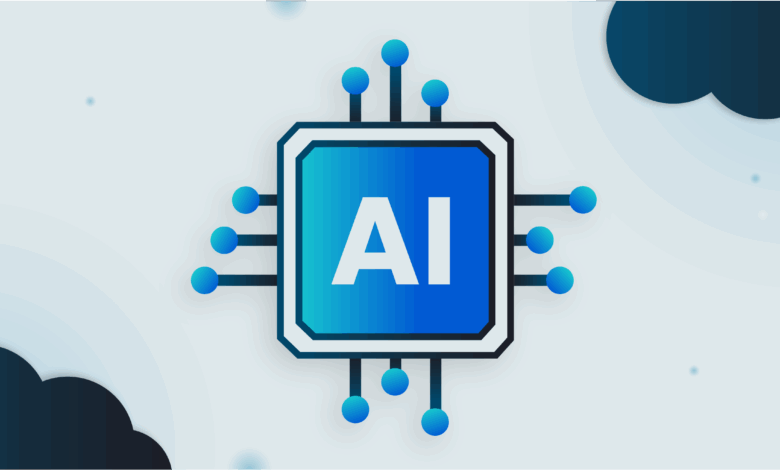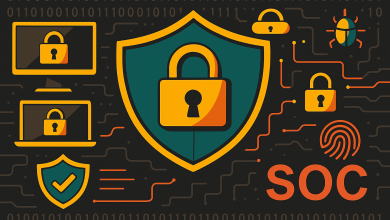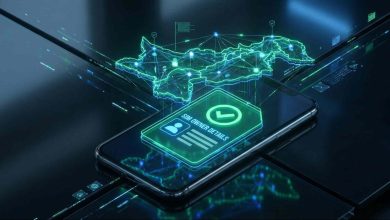
As artificial intelligence continues to evolve, we are entering a new phase, one that moves beyond content generation to something far more autonomous and complex. Agentic AI systems don’t just respond to prompts; they independently plan, make decisions, and execute tasks, often with minimal human oversight. This shift introduces enormous potential for productivity and innovation, but also a wave of novel security risks that organisations are only beginning to understand.
Recent industry data reveals that one in three organisations have already deployed AI agents, marking a threefold increase in just a few months. This rapid adoption underscores the urgency for development and security teams to get ahead of the risks before agentic systems become deeply embedded in daily operations.
What Makes Agentic AI Different?
Unlike traditional large language models (LLMs), which generate content based on user prompts, agentic AI refers to systems that take autonomous action. These agents build upon the capabilities of LLMs by adding layers of reasoning, decision-making, and tool integration. In short, they don’t just respond, they act.
An agentic AI system can accept a high-level goal, break it down into manageable steps, select the appropriate tools or APIs to use, execute actions, and assess its own performance, all without requiring human instruction. This capability represents a fundamental leap in how AI integrates into business processes.
For instance, a generative AI model might write a draft email when prompted. In contrast, an agentic system could generate the email, check the recipient’s calendar, schedule a meeting, and send a follow-up, all without human intervention. It’s this autonomy that makes agentic AI powerful and potentially dangerous.
The Rise of MCP and Multi-System Agents
One of the most significant recent developments in agentic AI is the introduction of the Model Context Protocol (MCP), released by Anthropic in late 2024. MCP provides a standardised method for agents to interface with external tools, APIs, and datasets. It reduces the need for bespoke integrations, allowing agents to perform complex operations across multiple systems more efficiently.
However, this increased connectivity comes at a cost. As agents interact with more tools and data sources, their attack surface expands. Vulnerabilities such as indirect prompt injection, data leaks, and misconfigured access permissions become more challenging to detect and defend against, especially when systems are evolving dynamically through self-directed learning.
Real-World Use Cases and Real-World Risks
Agentic AI is already reshaping industries. In software development, agents can generate, test, and deploy code at speed. A recent survey of over 13,000 developers found that nearly 30% of code is now written by AI tools. The trend of “vibe coding”, where applications are built with little to no manual programming, is gaining traction, though often at the expense of robust security practices.
Other industries are not far behind. In the financial services industry, agentic AI is being utilised to analyse markets, adjust investment strategies, and even detect fraud in real-time. In customer service, agents autonomously respond to inquiries and resolve common issues. In healthcare, agentic systems are supporting diagnostics, patient triage, and administrative workflows.
These applications demonstrate the promise of agentic AI, but they also highlight the significant risks associated with potential failures. A misfiring agent in a healthcare setting could impact patient outcomes. In finance, for example, it could lead to regulatory violations or major losses.
A New Breed of Threats
The security threats introduced by agentic AI are not just variations of existing risks; they’re an entirely new class of challenges. Traditional security controls were never designed to protect systems that reason and act independently.
For example, memory poisoning involves injecting false data into an agent’s memory, altering its future decisions and behavior. Tool misuse occurs when attackers manipulate agents into using system resources for malicious purposes, such as editing files, sending unauthorised network requests, or executing harmful code.
Resource overload is another growing concern. Because agents require compute power, memory, and access to external systems, attackers can trigger denial-of-service conditions by flooding them with high-intensity requests. Similarly, goal manipulation involves tricking the agent into misunderstanding or redefining its task, sometimes leading to harmful or counterproductive behavior that appears reasonable at first glance.
In multi-agent environments, the risk of communication poisoning increases as attackers inject false or misleading data into shared channels, disrupting coordination and degrading performance. Without strong authentication, agents can even fall victim to identity spoofing, where attackers impersonate trusted users or systems to issue malicious commands.
Security by Design: Best Practices for Developers
Securing agentic AI requires a shift in mindset from reactive defence to proactive, secure-by-design development. Developers must consider security at every stage of the software development lifecycle, from initial design to deployment and maintenance.
Early threat modeling is critical. Understanding how an agent might be exploited, whether through data injection, tool abuse, or indirect input manipulation, allows developers to build controls that anticipate attacks rather than simply respond to them. Tools like ThreatCanvas can help automate this analysis at scale.
Agents should always be run in sandboxed environments, such as containers or virtual machines, to isolate their impact and prevent unintended consequences. Code should be written for restricted contexts, avoiding dependencies on open system resources or unsecured external connections.
Permissions must be tightly scoped. Applying the principle of least privilege is essential: agents should have only the access required for their immediate task, no more, no less. Hard-coded credentials and overly privileged API keys must be avoided at all costs.
Prompt hygiene, where you treat all user input as potentially hostile, is also critical. Developers must rigorously validate and sanitise inputs before passing them to other systems or agents. Even internally generated prompts should be reviewed to guard against the accidental introduction of malicious content.
Finally, agents must be designed with fail-safe defaults. In the event of an error or unexpected condition, the system should halt gracefully, avoiding uncontrolled retries or cascading failures that could degrade performance or expose vulnerabilities.
Keeping Humans in the Loop
Despite the sophistication of agentic AI, human oversight remains a crucial component of secure deployment. The concept of “human-in-the-loop” (HITL) ensures that agents escalate uncertain decisions for manual review and oversight. This enables organisations to identify anomalies, make informed, context-sensitive judgments, and respond quickly to emerging threats.
HITL is not a limitation of AI; it’s a safeguard. It enables teams to respond to edge cases, minimise false positives, and foster trust in automated systems. Effective HITL implementations define clear escalation paths and ensure agents can defer to human authority when necessary.
A Call to Action
Agentic AI is not just the next step in artificial intelligence; it’s a new technological paradigm. It’s changing how businesses operate, how software is developed, and how decisions are made. But without strong security foundations, its benefits could be overshadowed by costly incidents and reputational damage.
Organisations must act now to incorporate agentic-specific security strategies into their development lifecycles. That means investing in secure coding training, adopting automated threat modeling tools, enforcing strict access controls, and embracing human oversight as a best practice, not a last resort.
As agentic AI becomes embedded in the fabric of modern enterprises, it’s clear that security can no longer be an afterthought. It must be part of the blueprint from day one.
To learn more about SecureFlag, please visit https://www.secureflag.com/




